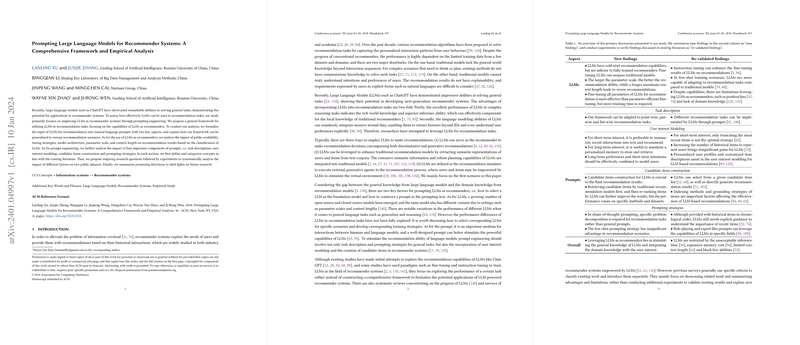Understanding the Application of LLMs in Recommender Systems
Introduction to LLMs as Recommenders
Recommender systems have become essential in helping users navigate through an overwhelming amount of content to find what truly interests them. These systems analyze user behavior and preferences to suggest items users might like. With the advent of LLMs, such as ChatGPT, a new potential has emerged for creating more sophisticated recommender systems. LLMs are equipped with a vast amount of world knowledge and language abilities, making it possible to understand and use text in ways that traditional models cannot. This overview examines how LLMs can be utilized as recommenders, discussing factors that influence their effectiveness.
Framework for LLMs in Recommender Systems
LLMs can be integrated into recommender systems in several ways: as stand-alone recommendation models that decide which items to recommend, as tools that extract semantic understanding from text to enhance traditional algorithms, or as simulators for generative agents in recommendation environments. The focus here is on their use as stand-alone recommendation models.
One must consider two crucial factors when it comes to prompting LLMs as recommenders: selecting the right LLM as a foundation model and the construction of prompts themselves. Open-source and closed-source LLMs each have their pros and cons, with closed-source models demonstrating higher capability in zero-shot performance. However, open-source models offer more flexibility as they can be fine-tuned with domain-specific data. Model architecture, parameter scale, and context length are additional attributes that influence an LLM's ability to make recommendations.
Prompt Engineering for LLM-Based Recommender Systems
The magic of prompting lies in crafting prompts that are clear and effectively tailor the innate abilities of an LLM to the task of making recommendations. This art requires addressing the nature of the task through careful task description, representing user interests appropriately, considering the nature and structure of candidate items, and applying strategic prompting strategies such as zero-shot and few-shot prompting or using specialized techniques like recency-focused or role-playing prompts. Each component of the prompt plays an essential role in guiding the LLM towards generating useful recommendations.
Empirical Analysis and Insights
Experiments on two public datasets revealed several insightful findings. Closed-source LLMs, especially the latest like GPT-4, display a robust ability for cold-start recommendations and can surpass certain traditional models. Open-source LLMs can also be fine-tuned for improvements but at the cost of computational efficiency.
Regarding prompt engineering, it is notable that recent item interaction holds significant weight, and prompts that emphasize recency tend to provide better results. LLMs still need explicit instructions to grasp user preferences; hence, adding summary generation of user profiles in prompts can aid in refining results. Interestingly, re-ranking candidates from traditional models with LLMs doesn’t always yield improvements, suggesting that the LLM's general knowledge can be harnessed more effectively in some contexts than in others.
Future Directions
The journey of using LLMs in recommender systems is just beginning. Research should move towards optimizing their efficiency for real-world applications, developing methods for knowledge distillation that retain the LLM's abilities in more nimble models, and expanding into multimodal recommendations. Moreover, fairness considerations and privacy issues are paramount, ensuring that LLMs are employed ethically and responsibly in an increasingly personalized digital experience.
In conclusion, LLMs have opened up a new horizon for recommender systems. While challenges remain, their advanced understanding and generation of natural language promise to revolutionize how systems understand and cater to individual user preferences.
